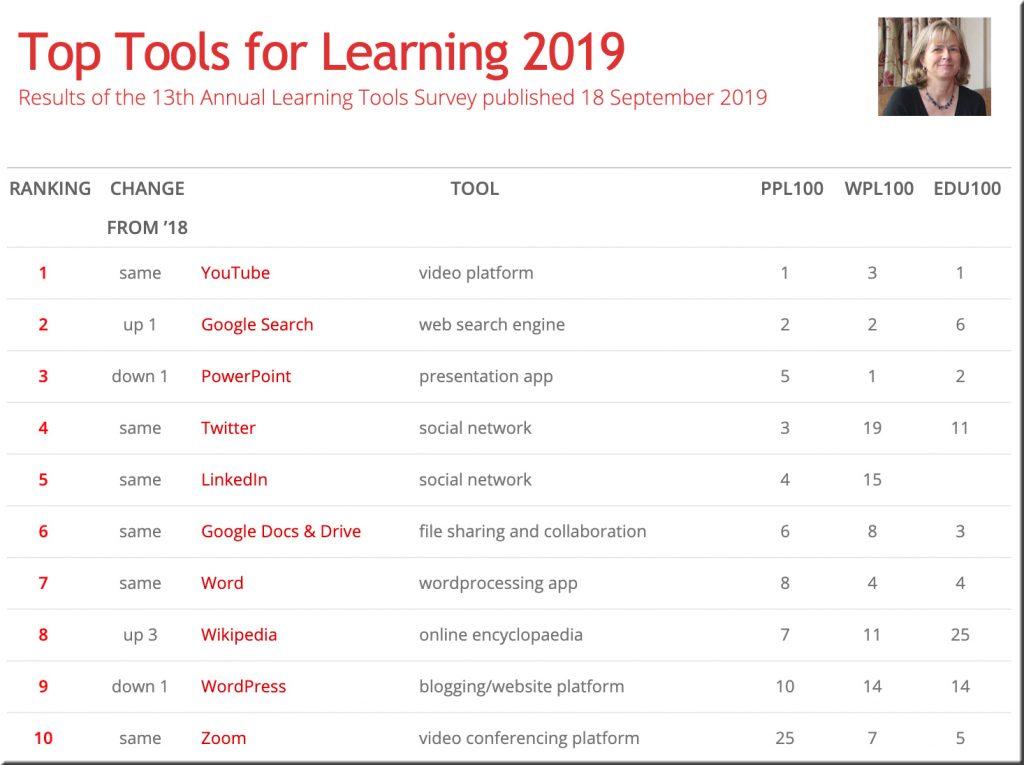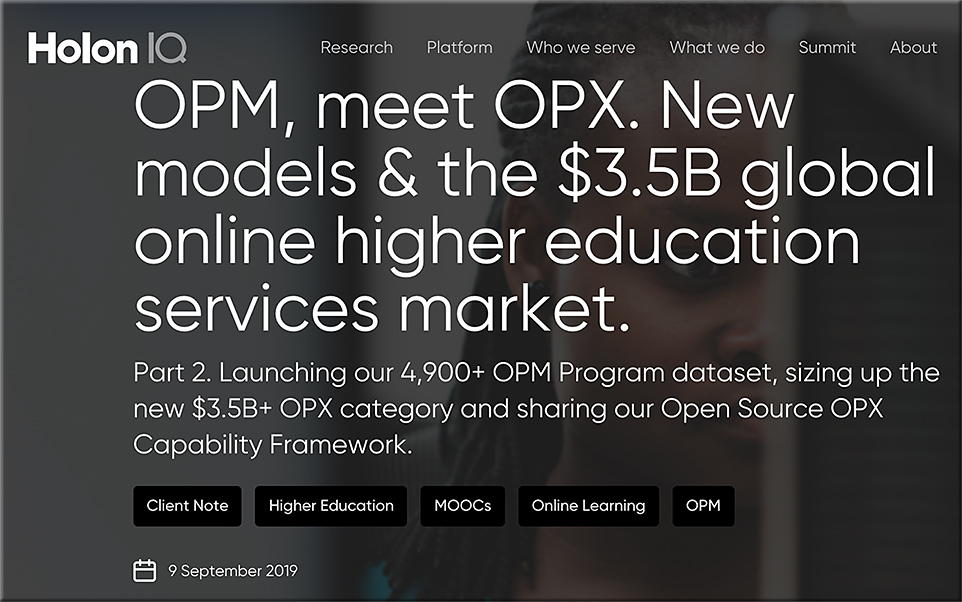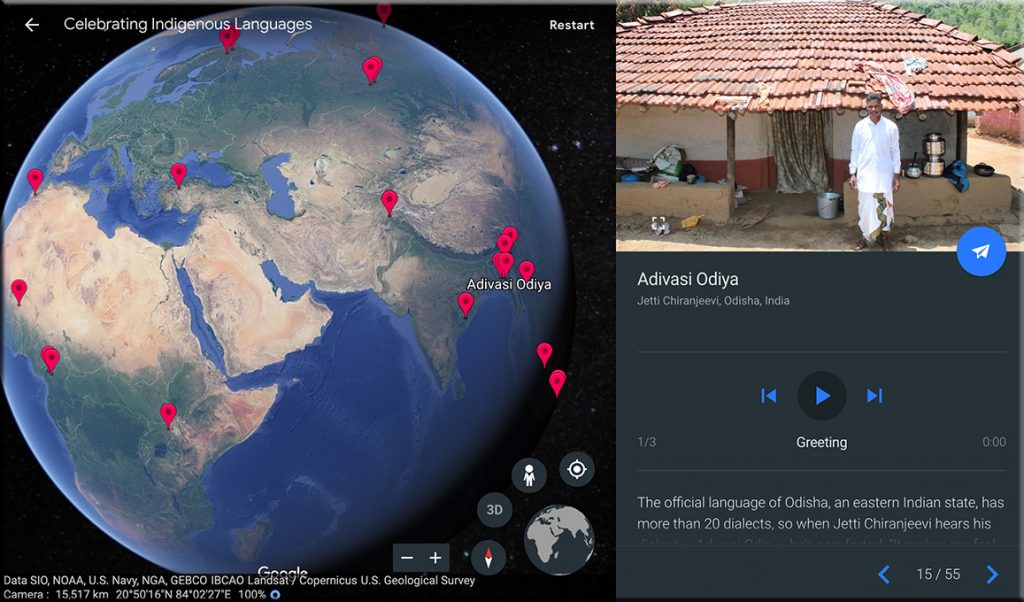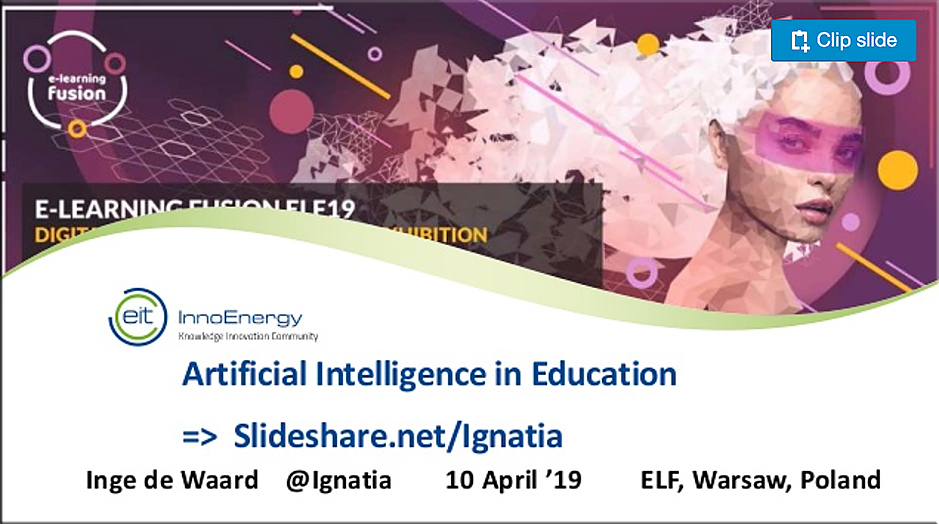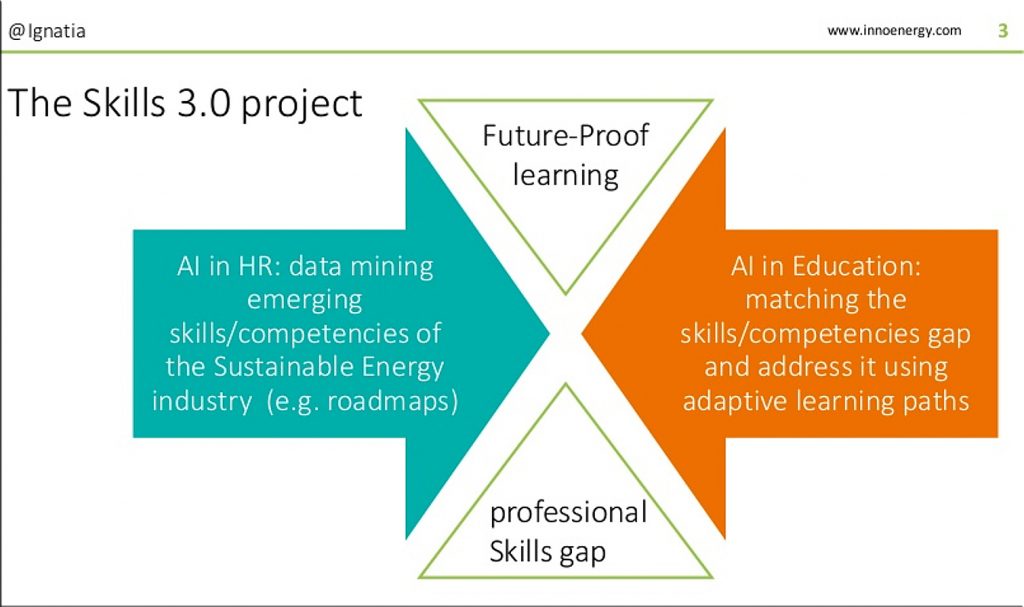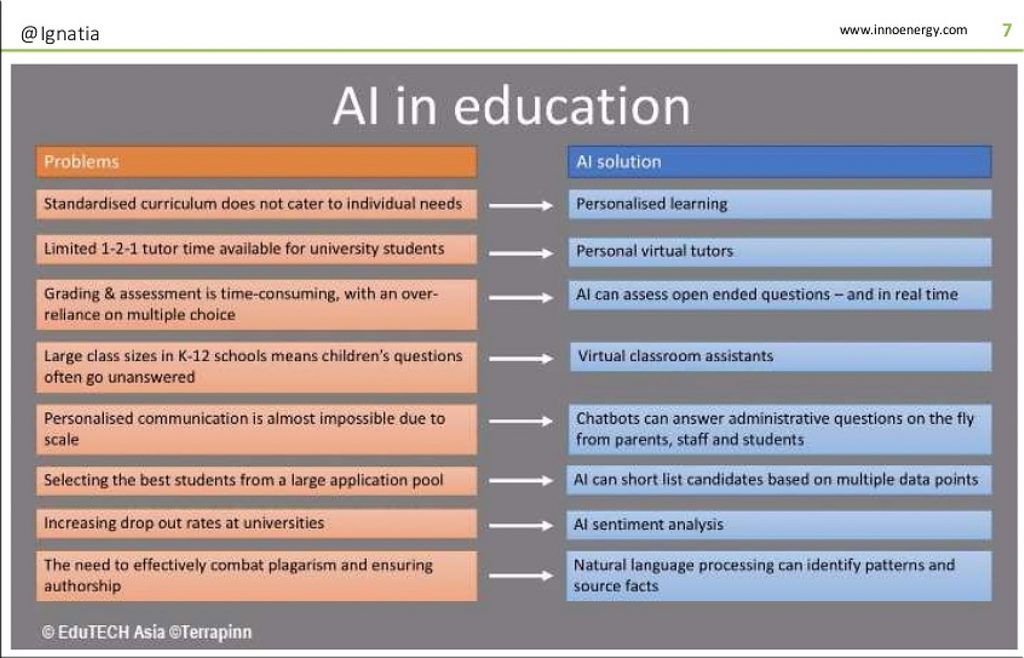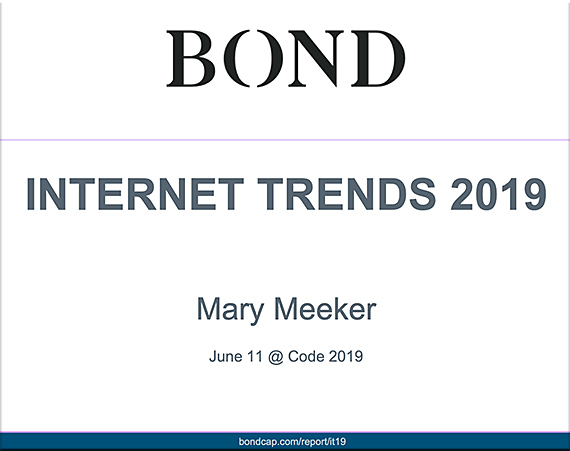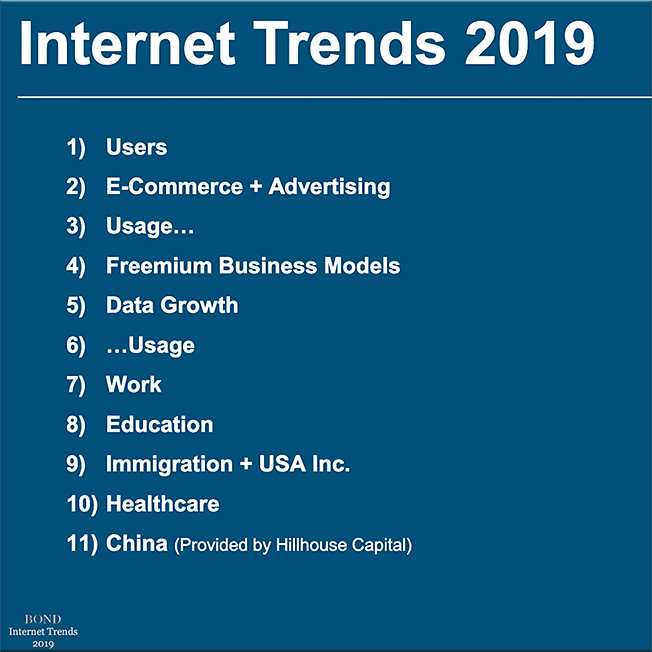Photo-realistic VR tour Oof the Palace Of Versailles now available free on SteamVR — from vrscout.com by Kyle Melnick
The Global Landscape of Online Program Companies — from by Doug Lederman
New trove of data suggests a bigger, more complex, more varied ecosystem of companies that work with colleges to take their academic programs online.
Excerpt:
A new dataset promises to give college leaders, company officials and others involved in the online learning landscape much more information about who offers what programs, how they manage them and where the money is flowing, among other factors.
And the company behind the new data, Holon IQ, published a report today that gives a new name to the large and diversifying category of providers that are working with colleges to take their programs online: OPX, instead of OPM, for online program management companies. (More on that later.)
Also see:
Also see:
- Multi-Faculty Collaboration to Design Online General Studies Courses — from facultyfocus.com by B. Jean Mandernach
Excerpt:
While this type of autonomy in course design makes sense for the face-to-face classroom, it may be less practical–and less effective–in the context of online education. Simply put, development of a high-quality online course takes considerable time and advanced knowledge of online pedagogy. If multiple faculty members are teaching the same course online (as is often the case with general studies or other high-demand courses), it is not an efficient use of departmental time, resources, or budget to have multiple faculty developing their own online classroom for different sections of the same course.
What to expect at IFA 2019, Europe’s colossal tech show — from digitaltrends.com by Josh Levenson
Excerpt:
This week, the world’s leading manufacturers will take to the stage at IFA 2019 in Berlin, Germany, to showcase their latest innovations. Here’s what you need to know about this year’s show, including when it’s set to start, how long it will run for, where it’s held, the schedule, and all the devices we’re expecting to see unveiled by the likes of LG, Sony, Samsung, and more.
Architect paints famous cities around the world in watercolor and the result is awesome — from themindcircle.com
Blockchain: The move from freedom to the rigid, dominant system in learning — from oeb.global by Inge de Waard
In this post Inge de Waard gives an overview of current Blockchain options from industry and looks at its impact on universities as well as philosophises on its future.
Excerpt:
I mentioned a couple of Blockchain certification options already, but an even more advanced blockchain in learning example has entered on my radar too. It is a Russian implementation called Disciplina. This platform combines education (including vocational training), recruiting (comparable with what LinkedIn is doing with its economic graph) and careers for professionals. All of this is combined into a blockchain solution that keeps track of all the learners’ journey. The platform includes not only online courses as we know it but also coaching. After each training, you get a certificate.
TeachMePlease, which is a partner of Disciplina, enables teachers and students to find each other for specific professional training as well as curriculum-related children’s schooling. Admittedly, these initiatives are still being rolled out in terms of courses, but it clearly shows where the next learning will be located: in an umbrella above all the universities and professional academies. At present, the university courses are being embedded into course offerings by corporations that roll out a layer post-university, or post-vocational schooling.
Europe embraces blockchain, as can be seen with their EU Blockchain observatory and forum. And in a more national action, Malta is storing their certifications in a blockchain nationwide as well. We cannot deny that blockchain is getting picked up by both companies and governments. Universities have been piloting several blockchain certification options, and they also harbour some of the leading voices in the debate on blockchain certification.
Also see:
Also see:
- 7 blockchain mistakes and how to avoid them — from computerworld.com by Lucas Mearian
The blockchain industry is still something of a wild west, with many cloud service offerings and a large universe of platforms that can vary greatly in their capabilities. So enterprises should beware jumping to conclusions about the technology.
Photograph of Multicolored “Cloud” Galaxy by Amateur Photographers Combines 1,060 Hours of Exposure — from thisiscolossal.com by Andrew Lasane
Excerpt:
A group of French amateur astrophotographers called Ciel Austral (“Southern Sky”) have shared a 240-megapixel image of the Large Magellan Cloud (LMC). Constructed using 4,000 images, the seamless collage required over 1,060 hours of exposures. Together, the images form a massive digital poster with colorful explosions and pockets of cosmic dust that resemble watercolors dripped and blown across an inky black surface.
The individual photos that make up the 14,400-pixel-wide image were captured between July 2017 and February 2019 using a 160mm refracting telescope at an observatory in Chile that is owned by the photographers. The colors in the image are not what you would see if you traveled 163,000 light years to get LMC. Ciel Austral used special filters that (based on which elements are present) highlight parts of the visual spectrum. The resulting swirling hues are best appreciated in close-ups like the ones below. To see the full size image in all of its glory, head over to the Ciel Austral website.
From DSC:
Again I say, “Glory to God in the highest!”










